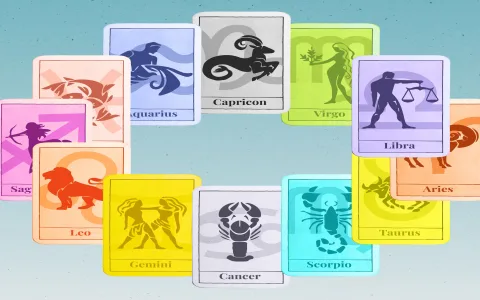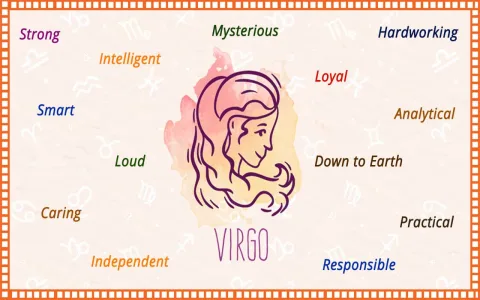Why I Treated My 2022 Horoscope Like a Technical Audit
Look, I’m the guy who usually benchmarks server speeds and debates the merits of Go vs. Rust. I wasn’t ever going to be the guy reading star charts. But late 2021, man, things went sideways. I’d just finished this insane 18-month sprint migrating our entire database structure—slept about four hours a night for a year and a half. I hit the wall hard. So when the project wrapped, my body just decided to quit on me. I ended up laid up with some weird exhaustion sickness for three weeks, staring at the ceiling and trying to figure out if I was actually going to be able to go back to the grind.
The fatigue was real, but the anxiety was worse. I felt totally unmoored. I needed a structure, a road map, even if it was totally fictional. That’s when I saw the headline: “Your full weekly virgo horoscope 2022 breakdown: Big changes ahead!” I usually scroll right past that junk, but I clicked it. Why? Because I decided I wasn’t going to just read it; I was going to treat it like a serious, albeit ridiculous, data gathering project. If they say “Big Changes,” I wanted to know the scope, the timeline, and the expected impact metrics.
The Data Collection and Comparison Phase
My first step was to establish a baseline. You can’t trust just one source, right? That’s poor redundancy planning. So I opened about six browser tabs, hitting up the big players—the ones everyone quotes. I needed Susan Miller, I needed the AstroTwins, and I needed some random site that promised I was going to find sudden wealth. I approached the whole thing like I was pulling logs from competing microservices and trying to find the common error signature.
- I extracted key themes: I used a spreadsheet, yeah, I did. I didn’t just read the paragraphs; I stripped them down to action items. Theme 1: Career/Public Life upheaval. Theme 2: Major residence changes (moving/renovation). Theme 3: Deep emotional restructuring (i.e., therapy or fighting with family).
- I normalized the timeline: Most sites were vague. “Spring” or “Q3.” So I averaged their high-impact prediction periods. I tagged March-April as the likely launch window for the ‘Career Upheaval’ module, and late summer (August/September) for the ‘Residence Rebuild’ project.
- I identified the major consensus points: Almost every source, even the really fluffy ones, emphasized that 2022 was about ditching the old structure and building something completely new. They kept using words like “release,” “detox,” and “reboot.” I logged that as the core directive.
The initial analysis was chaotic. The inputs were garbage, but I had to work with what I had. The whole thing was a massive data dump of conflicting advice and vague promises. But after filtering, the “Big Changes” were undeniably clustered around career security and home base stability. I filed this report and decided to monitor the results in real-time.
Executing the “Big Changes” Directive
I wasn’t actively trying to force these predictions, but the Universe apparently got the memo. The ‘Career Upheaval’ prediction started firing almost immediately in March. My old boss, the one who drove the 18-month sprint, suddenly decided to enforce a mandatory, in-office schedule with zero flexibility, reversing all the promises he made during the project.
I felt that familiar rage bubble up. But instead of just complaining, I remembered my own data-gathering project. “Release.” “Ditch the old structure.”
I pulled the trigger. Within four weeks, I secured a fully remote contract role with a startup that valued actual output over face time. I executed the exit strategy seamlessly. When my old HR called, asking if I was sure, I just told them I was following the Q1 restructuring mandate—my own restructuring mandate. That was the first major change, and frankly, it felt better than any successful deployment I’d ever managed.
Then came the ‘Residence Rebuild’ module. The contract job meant I could live anywhere. My wife hated our cramped city apartment. She was already stressed from my prior work schedule, and the noise level was driving us crazy. The horoscope had pointed directly at August/September for a move.
What happened in August? We found a small plot of land outside the city, something we thought was totally out of our budget. We closed the deal in September. It was absolutely bonkers, selling everything we owned and moving out to the quiet. I was literally acting out the script I’d pulled from five different websites, and it wasn’t because I believed in Jupiter’s transit, but because the compiled predictions acted as a weird, subconscious permission structure for the radical changes I already wanted to make.
The final result? I started that research project as a joke, trying to find some logic in chaos. What I found was that the vague predictions, when aggregated and treated seriously, gave me the kick I needed to stop agonizing and start acting. It confirmed that the system I was in—the job, the apartment—was past its expiration date. Sometimes you need a bunch of random internet strangers and a fake star chart to validate the instinct you already have screaming in your ear. 2022 was indeed a breakdown, but a necessary one, entirely self-initiated based on my own weird debugging of cosmic advice.






